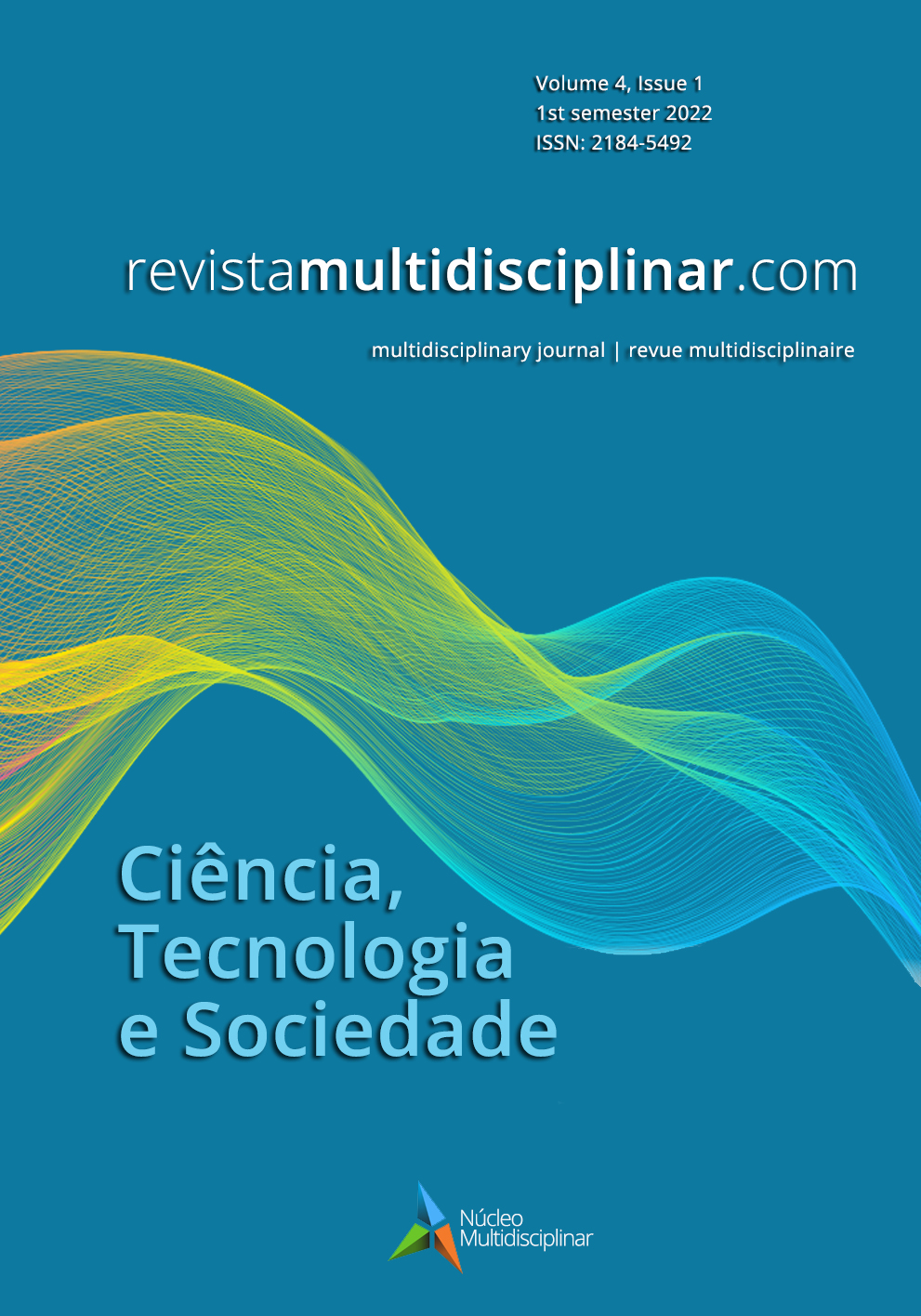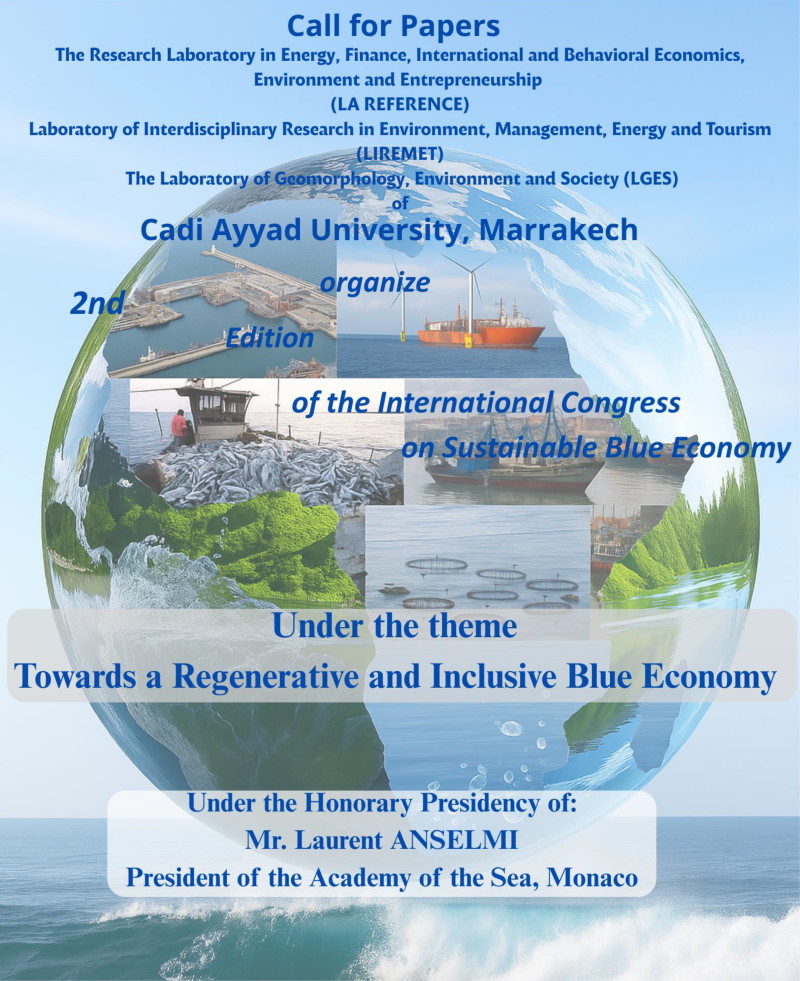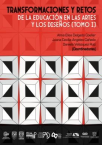Resiliência e Transformação do Comércio
O Caso Português
DOI:
https://doi.org/10.23882/rmd.22070Palabras clave:
Retalho independente, resiliência, comércio, distribuição, Motivações de consumo, comportamento dos consumidoresResumen
Como compreender os mecanismos ou os processos que, empresas retalhistas independentes de Lisboa, criadas ao longo do século XIX e algumas até anteriores, conseguiram dobrar o século XX e chegar aos dias de hoje ainda saudáveis, lucrativas e com potencial para o futuro? Tal situação só pode ser explicada pela fantástica capacidade de resiliência demonstrada na sua atividade ao longo de quase dois séculos. Fatores como a transição familiar intergeracional e a ligação da atividade retalhista a uma indústria não são determinantes, sendo mesmo os fatores com menor potencial de resiliência encontrados, facto que, em certa medida, face à perceção pacífica existente, constitui uma surpresa deste estudo. Em contrapartida, os fatores internos da atividade comercial como, a localização, a natureza ultra especializada e a qualidade do serviço e do atendimento constituem-se como fortes fatores potencializadores da resiliência do retalho independente centenário de Lisboa.
Citas
Adger, W. N. (2000). Social and ecological resilience: are they related? Progress in Human Geography, 24(3), 347–364. https://doi.org/10.1191/030913200701540465
Altintas, G. & Royer, I. (2009). Renforcement de la résilience par un apprentissage post-crise : une étude longitudinale sur deux périodes de turbulence. M@n@gement, 12, 266-293. https://doi.org/10.3917/mana.124.0266
Arregle, J. L., Hitt, M. A., Sirmon, D. G., & Very, P. (2007). The development of organizational social capital: Attributes of family firms. Journal of management studies, 44(1), 73-95. https://doi.org/10.1111/j.1467-6486.2007.00665.x
Arthur, W. B. (1999). Complexity and the economy. science, 284(5411), 107-109. https://doi.org/10.1126/science.284.5411.107
Ballantine, P. W., Jack, R., & Parsons, A. G. (2010). Atmospheric cues and their effect on the hedonic retail experience. International Journal of Retail & Distribution Management. 38(8), 641-653. https://doi.org/10.1108/09590551011057453
Barreta, J. (2012). Comércio de proximidade e regeneração urbana. CIP, Lisboa.
Bell, D. R., Corsten, D., & Knox, G. (2010). Unplanned buying on shopping trips. Marketing Science Institute. https://www.msi.org/wp-content/uploads/2020/06/MSI_Report_10-109.pdf
Byun, S.-E., & Mann, M. (2011). The Influence of Others: The Impact of Perceived Human Crowding on Perceived Competition, Emotions, and Hedonic Shopping Value. Clothing and Textiles Research Journal, 29(4), 284–297. https://doi.org/10.1177/0887302X11422820
Berman, B., & Evan, J. R. (1995). Retail Management (6.ª ed.). Pearson Education Limited.
Bonanno, G. A. (2004). Loss, Trauma, and Human Resilience: Have We Underestimated the Human Capacity to Thrive After Extremely Aversive Events? American Psychologist, 59(1), 20–28. https://doi.org/10.1037/0003-066X.59.1.20
Callaway, D. S., Newman, M. E. J., Strogatz, S. H., & Watts, D. J. (2000) Network Robustness and Fragility: Percolation on Random Graphs. Physical Review Letters, 85(25), 5468–5471. https://doi.org/10.1103/PhysRevLett.85.5468
Carpenter,S., Walker, B., Anderies, J. M., & Abel, N. (2001). From metaphor to measurement: resilience of what to what? Ecosystems, 4, 765–781. https://doi.org/10.1007/s10021-001-0045-9
Collins, A., Kavanagh, E., Cronin, J., & George, R. (2014). Money, mavens, time and price search: modeling the joint creation of utilitarian and hedonic value in grocery shopping. Journal of Marketing Management, 30(7-8), 719-746. https://doi.org/10.1080/0267257X.2013.839572
Cox, A. D., Cox, D., & Anderson, R.D. (2005). Reassessing the pleasures of store shopping. Journal of Business Research, 58(3), 250-259. https://doi.org/10.1016/S0148-2963(03)00160-7
Conant, J., & White, J. (1999). Marketing programme planning, process benefits, e store performance: an initial study among small retail firms. Journal of Retailing 75(4), 525–541. https://doi.org/10.1016/S0022-4359(99)00017-2
Creusen, M. E. H., & Schoormans, J. P. L. (2005). The Different Roles of Product Appearance in Consumer Choice. Journal of Product Innovation Management, 22(1), 63–81. https://doi.org/10.1111/j.0737-6782.2005.00103.x
Coutinho, C. P. (2011). Metodologia de Investigação em Ciências Sociais e Humanas:Teoria e Prática, Almedina.
Coutu, D. L. (2002). How resilience works. Harvard business review, 80(5), 46-56.
Dalziell, E. P., & Mcmanus, S. T. (2004). Resilience, vulnerability, adaptive capacity: implications for system performance. In International Forum for Engineering Decision Making (IFED), Stoos, Switzerle. http://hdl.handle.net/10092/2809
Dawson, J. (1983). Independent retailing in Great Britain: dinosaur or chameleon. Retail e Distribution Management, 11(3), 29–32. https://doi.org/10.1108/eb018188
Danes S.M., Stafford K., Haynes G., & Amarapurkar S. S. (2009). Family Capital of Family Firms: Bridging Human, Social, and Financial Capital. Family Business Review, 22(3), 199-215. https://doi.org/10.1177%2F0894486509333424
Davies, G., & Harris, K. (1990). The Independent Retailer. In Small Business (pp. 1-15). Palgrave, London.
Dawson, S. J., Bloch, P. H., & Ridgway, N. M. (1990). Shopping motives, emotional states and retail outcomes. Journal of Retailing, 66(4), 408-427.
De Carolis, D. M., Yang, Y., Deeds, D. L., & Nelling, E. (2009). Weathering the storm: the benefit of resources to high‐technology ventures navigating adverse events. Strategic Entrepreneurship Journal, 3(2), 147-160. https://doi.org/10.1002/sej.68
Desmet, P., & Hekkert, P. (2007). Framework of product experience. International journal of design, 1(1). http://www.ijdesign.org/index.php/IJDesign/article/view/66
Hamrouni, A. D., & Touzi, M. (2011). Technique of collage for store design atmospherics. Qualitative Market Research: An International Journal, 14(3), 304–323. https://doi.org/10.1108/13522751111137523
Hassenzahl, M., Schöbel, M., & Trautmann, T. (2008). How motivational orientation influences the evaluation and choice of hedonic and pragmatic interactive products: The role of regulatory focus. Interacting with Computers, 20(4-5), 473-479. https://doi.org/10.1016/j.intcom.2008.05.001
Hui, S. K., Inman, J. J., Huang, Y., & Suher, J. (2013). The effect of in-store travel distance on unplanned spending: Applications to mobile promotion strategies. Journal of Marketing, 77(2), 1-16. https://doi.org/10.1509/jm.11.0436
Fiksel, J. (2006). Sustainability and resilience: toward a systems approach. Sustainability: Science, Practice and Policy, 2(2), 14-21. https://doi.org/10.1080/15487733.2006.11907980
Folke, C., Carpenter, S., Elmqvist, T., Gunderson, L., Holling, C. S., & Walker, B. (2002). Resilience and sustainable development: building adaptive capacity in a world of transformations. AMBIO: A journal of the human environment, 31(5), 437-440. https://doi.org/10.1579/0044-7447-31.5.437
Gallopín, G. C. (2006). Linkages between vulnerability, resilience, and adaptive capacity. Global environmental change, 16(3), 293-303. https://doi.org/10.1016/j.gloenvcha.2006.02.004
Gibbs, M. T. (2009). Resilience: What is it and what does it mean for marine policymakers?. Marine Policy, 33(2), 322-331. https://doi.org/10.1016/j.marpol.2008.08.001
Goble, G., Fields, H., & Cocchiara, R. (2002). Resilient infrastructure: Improving your business resilience. IBM Global Services.
Haimes, Y. Y., Crowther, K., & Horowitz, B. M. (2008). Homeland security preparedness: Balancing protection with resilience in emergent systems. Systems Engineering, 11(4), 287-308. https://doi.org/10.1002/sys.20101
Hamel, G., & Valikangas, L. (2003) The quest for resilience. Harvard Business Review, 81, 52–63.
He, Y. (2008). A novel approach to emergency management of wireless telecommunication system (Doctoral dissertation, University of Saskatchewan). http://hdl.handle.net/10388/etd-06112008-114820
Ignatiadis, I., & Nandhakumar, J. (2007). The impact of enterprise systems on organizational resilience. Journal of Information Technology, 22(1), 36-43. https://doi.org/10.1057%2Fpalgrave.jit.2000087
Jin, B., & Kim, J. O. (2003). A typology of Korean discount shoppers: shopping motives, store attributes, and outcomes. International journal of service Industry Management, 14(4), 396-419. https://doi.org/10.1108/09564230310489240
Lachman, M. L., & Brett, D. L. (2013). Generation Y: Shopping and entertainment in the digital age. Urban Land Institute.
Mokhlis, S., Kamarudin, A. R., & Yassin, S. (2003). Correlates of shopping orientation with retail choice decisions among young consumers. Jurnal Pengurusan, 22, 47-66. https://ejournal.ukm.my/pengurusan/article/view/1313
Moschis, G., Curasi, C., & Bellenger, D. (2004). Patronage motives of mature consumers in the selection of food and grocery stores. Journal of Consumer Marketing, 21(2), 123-133. https://doi.org/10.1108/07363760410525687
Morschett, D., Swoboda, B., & Foscht, T. (2005). Perception of store attributes and overall attitude towards grocery retailers: The role of shopping motives. The International Review of Retail, Distribution and Consumer Research, 15(4), 423-447. https://doi.org/10.1080/09593960500197552
Morschett, D., Swoboda, B., & Schramm-Klein, H. (2005). Shopping orientations as determinants of attitude towards food retailers and perception of store attributes. In K. M. Ekstrom & H. Brembeck (Eds.), E-European Advances in Consumer Research Volume 7 (pp. 160-167). Association for Consumer Research, Goteborg, Sweden. https://www.acrwebsite.org/volumes/13673
Moutinho, L., Dionísio, P., Rodrigues, J. V., & Pereira, H. G. (2012). Marketing Trends. Marketing FutureCast Lab, ISCTE & IUL, Bnomics.
Kotler, P., & Dubois, B. (1995). Marketing Management. Publi Union.
Kirby, D. A. (1974). The decline and fall of the smaller retail outlet: A geographical study. Retail and Distribution Management, 2(1),14–18. https://doi.org/10.1108/eb017765.
Kirby, D. A., & Law, D. C. (1981). The birth and death of small retail units in Britain: A preliminary study. Retail and Distribution Management, 9(1), 16–19. https://doi.org/10.1108/eb018085
Lengnick-Hall, C. A., & Beck, T. E. (2005). Adaptive fit versus robust transformation: How organizations respond to environmental change. Journal of Management, 31(5), 738-757. https://doi.org/10.1177%2F0149206305279367
Lengnick-Hall, C. A., & Beck, T. E. (2009). Resilience capacity and strategic agility: Prerequisites for thriving in a dynamic environment. San Antonio, TX: UTSA, College of Business.
Mallak, L. A. (1999, July). Toward a theory of organizational resilience. In PICMET'99: Portland International Conference on Management of Engineering and Technology. Proceedings Vol-1: Book of Summaries (IEEE Cat. No. 99CH36310). https://doi.org/10.1109/PICMET.1999.808142
Miller, R. (1981). Strategic pathways to growth in retailing. The Journal of Business Strategy, 1(3), 16-29.
Megicks, P. (2001). Competitive strategy types in the UK independent retail sector. Journal of Strategic Marketing, 9(4), 315-328. https://doi.org/10.1080/09652540110079029
McGee, J. E., & Peterson, M. (2000). Toward the development of measures of distinctive competencies among small independent retailers. Journal of small business management, 38(2), 19-33.
Patterson, E. S., Woods, D. D., Cook, R. I., & Render, M. L. (2007). Collaborative cross-checking to enhance resilience. Cognition, Technology & Work, 9, 155-162. https://doi.org/10.1007/s10111-006-0054-8
Rosa, C. A. (2014). Modelização Sincrónica da Qualidade de Serviço. Edição IADE. Lisboa
Rose, A., & Liao, S. Y. (2005). Modeling regional economic resilience to disasters: A computable general equilibrium analysis of water service disruptions. Journal of Regional Science, 45(1), 75-112. https://doi.org/10.1111/j.0022-4146.2005.00365.x
Rouse, W. B. (2005). Enterprises as systems: Essential challenges and approaches to transformation. Systems Engineering, 8(2), 138-150. https://doi.org/10.1002/sys.20029
Ryu, K., Han, H., & Jang, S. S. (2010). Relationships among hedonic and utilitarian values, satisfaction and behavioral intentions in the fast‐casual restaurant industry. International Journal of Contemporary Hospitality Management, 22(3), 416-432. https://doi.org/10.1108/09596111011035981
Rousseau, J. A. (2008). Manual de Distribuição. Principia, Lisboa.
Rousseau, J. A. (2001). Dicionário da Distribuição. AJE, Lisboa.
Rousseau, J. A. (2011, julho 13). 3.º Gene do ADN da Distribuição: Resiliência. Revista Hipersuper. https://bit.ly/3p3KhTw
Scott, M., Sorcinelli, G., Gutierrez, P., Moffatt, C., & DesAutels, P. (2006, June). CONFERENCEXP: an enabling technology for organizational resilience. In IFIP International Working Conference on the Transfer and Diffusion of Information Technology for Organizational Resilience (pp. 219-227). Springer, Boston, MA. https://doi.org/10.1007/0-387-34410-1_15
Sheffi, Y., & Rice Jr, J. B. (2005). A supply chain view of the resilient enterprise. MIT Sloan management review, 47(1), 41-48.
Starr, R., Newfrock, J., & Delurey, M. (2003). Enterprise resilience: managing risk in the networked economy. Strategy and business, 30, 1-10. https://bit.ly/3F5qAAf
Stevenson, H. E., & Jarillo, J. C. (1990). A paradigm of entrepreneurship: entrepreneurial management. Strategic Management Journal, 11(5), 17-27.
Stopford, J. M., & Baden‐Fuller, C. W. (1994). Creating corporate entrepreneurship. Strategic management journal, 15(7), 521-536. https://doi.org/10.1002/smj.4250150703
Stoltman, J. J., Gentry, J. W., & Anglin, K. A. (1991). Shopping choices: the case of mall choice. In R. H. Holman & M. R. Solomon (Eds.), Advances in Consumer Research Volume 18, (pp. 434-440). ACR Association for Consumer Research.
Thorne, M. L. (2000). Interpreting corporate transformation through failure. Management Decision, 38(5), 303-314. https://doi.org/10.1108/00251740010340481
Weick, K. E., & Sutcliffe, K. M. (2011). Managing the unexpected: Resilient performance in an age of uncertainty (Vol. 8). John Wiley & Sons.
Wreathall, J. (2006). Developing models for measuring resilience. John Wreathall & Co., Inc., Dublin, Ohio.
Van Kenhove, P., De Wulf, K., & Van Waterschoot, W. (1999). The impact of task definition on store-attribute saliences and store choice. Journal of Retailing, 75(1), 125-137. https://doi.org/10.1016/S0022-4359(99)80007-4
Zhang, W. (2008). Resilience engineering – a new paradigm e technology for systems. Canada: University of Saskatchewan.
Publicado
Cómo citar
Número
Sección
Licencia
Derechos de autor 2022 José António Rousseau

Esta obra está bajo una licencia internacional Creative Commons Atribución-NoComercial 4.0.









